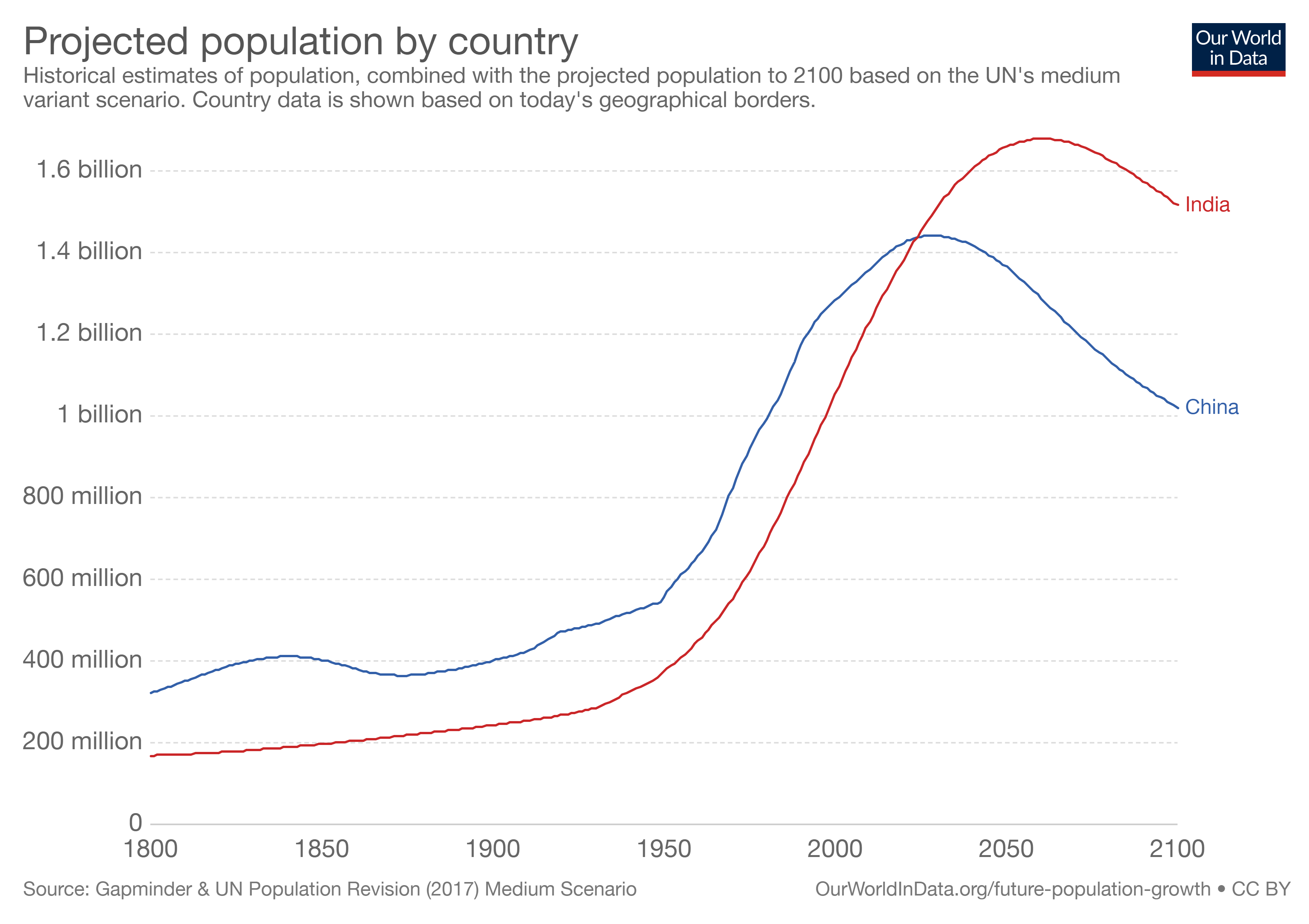India will soon overtake China to become the most populous country in the world

India is expected to reach 'peak population' in the late 2050s. Image: REUTERS/Sivaram V
Hannah Ritchie
Researcher, Our World in Data
Get involved with our crowdsourced digital platform to deliver impact at scale
Stay up to date:
China
China has been the world's most populous country for a long time: back in 1750, it had a population of 225 million, around 28% of the world population.1 By 2016, China had a population larger than 1.4 billion.
But China is soon to be overtaken by India. In the chart below we see historic and projected population by country, spanning from 1800 through to 2100. The projections – made by the UN's Population Division – suggest that by 2024, India will surpass China to become the world's most populous country.
Projections are always associated with a degree of uncertainty and this means the crossing point could be a few years earlier or later. But even within this degree of uncertainty, it's expected that India will become the most populous country within the next decade.
Rapidly declining fertility rates – from an average of 6 children down to 2.4 children per woman – in India means its population growth has fallen significantly over the last few decades. This means that while it will be the most populous country for the rest of the century, it's expected to reach 'peak population' in the late 2050s at around 1.7 billion before slowly falling in the second half of the century.
What does the future population of other countries look like?
In the map below we see country populations across the world through to the year 2100. By clicking on any country you can see how its population has changed since 1950, and its projections over the 21st century.
Don't miss any update on this topic
Create a free account and access your personalized content collection with our latest publications and analyses.
License and Republishing
World Economic Forum articles may be republished in accordance with the Creative Commons Attribution-NonCommercial-NoDerivatives 4.0 International Public License, and in accordance with our Terms of Use.
The views expressed in this article are those of the author alone and not the World Economic Forum.
The Agenda Weekly
A weekly update of the most important issues driving the global agenda
You can unsubscribe at any time using the link in our emails. For more details, review our privacy policy.
More on Geographies in DepthSee all
Andrea Willige
April 23, 2024
Libby George
April 19, 2024
Apurv Chhavi
April 18, 2024
Efrem Garlando
April 16, 2024
Babajide Oluwase
April 15, 2024
Rida Tahir
April 9, 2024








